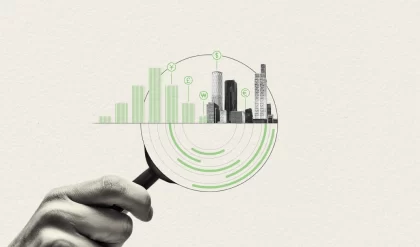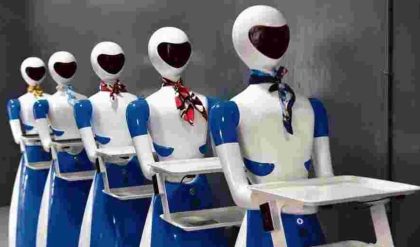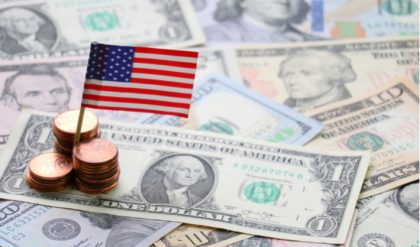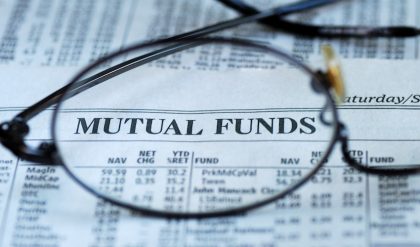The process by which businesses make decisions is as complex as the processes which characterize consumer decision-making. Business draws upon microeconomic data to make a variety of critical choices – any one of which could mean the success or failure of their enterprise. The reliability and currency of the information a business uses, therefore, is of the utmost importance.
What a business does with that data is decided by senior and top management. The major influences on their decisions may entail all or some of the following factors:
Logic
What the competition is doing
The state of the economy
A variety of other variable and unknown factors
Logic
Microeconomic data may be reduced to mathematical constructs from which logical decisions may be made. Let’s say we have a theoretical company, Firm A, that manufactures and sells clothing. Microeconomic data from this imaginary company has shown that its customers prefer navy blue, button-down shirts at a certain price.
The previous year the company sold 50,000 shirts at $20 each. For the sake of argument, let’s say that this year the economy has not changed. The gross national product (GNP), unemployment rates, interest rates and the stock and bond markets are all basically the same as the previous year. Logic would dictate that at least another 50,000 navy blue, button-down shirts should be manufactured and offered for sale.
Although that seems logical, it might not be the best choice.
What the Competition Is Doing
Firm B, which competes with Firm A, is selling a shirt this season which is similar in style and quality to the shirts of Firm A. But Firm B’s shirt is being offered for sale at $2 less, a 10% discount from Firm A’s $20 shirt.
How does Firm A compete now? Microeconomic theory holds that a price reduction should increase demand. If the price of Firm A’s shirts is reduced to less than what Firm B’s shirts are selling for, then theoretically, Firm A’s shirts would outsell the competition.
But how would the reduced price impact the profit margin of Firm A? Would the reduced profit hurt Firm A’s ability to pay the interest and principal on its debt? Would there be enough money for marketing and advertising? How would the reduced profitability affect the price of its shares on the market? And if the share price declined, would there be further sales of the stock, bringing down its price even more?
It’s reasonable to assume that these are the topics of discussion at the highest management levels of the company, Firm A, when the executives meet to make a decision on this issue. However, another factor is introduced before a final decision is made on the number of shirts to be made and at what price they will be sold for in the market.
Firm A’s vice president in charge of marketing and advertising asks a pertinent question: What if Firm A increases its marketing and advertising budget by 5% rather than reduce its profit margin by 10%? Would the increase in marketing and advertising of blue shirts sell more shirts, and therefore meet or beat the competition? Microeconomic data has shown that in some cases a vigorous ad campaign is often a successful way to beat the competition. (For related reading, see: What Factors Influence Competition in Microeconomics?)
State of the Economy
Now another perplexing question is asked by the chief financial officer (CFO). The economy is good at the moment, but leading economic indicators forecast a downturn in the fourth-quarter of the year – the quarter that includes the winter holiday season during which a large percentage of a firm’s annual sales occur. (For more, see: Economic Indicators to Know.)
When the economy starts to slide during the holiday season, would Firm A be better off selling shirts at a lower price than the competition, maintaining a profit that would be lower than the previous year, and attempt to restructure its debt at more favorable terms?
Although the economy in general is considered by macroeconomics, its impact on the microeconomy must often be taken into account in the decision-making process.
Variables and Unknown Factors
Variables and unknown factors may include a consumer desire for something new. Consumers may inexplicably tire of blue shirts and prefer another color. Or perhaps the blue shirts made by Firm A are so durable that the shirts bought the previous year have not worn out and consumers don’t need new shirts this year.
Taste-makers and fashion trend-setters may show a preference for green shirts rather than blue shirts. Consumers who are influenced by these trend-setters may buy more green shirts than blue shirts, thus leaving Firm A with a surplus of unsold blue shirts. Firm A may recover some of its costs by offering blue shirts at a steep price discount. But this, of course, hurts the perception of quality associated with the Firm A brand. (See also: The Economics Behind Sneakers.)
All of these elements – the microeconomic data, the questions it provokes, the possible outcomes of each choice made in the decision-making process – are what business executives must consider to assure the success of their companies and maximize their profitability.
An Example
Let’s take a closer look at this shirt manufacturing firm. Keep in mind, it’s just one of many competing firms selling shirts. Each of these firms is determined to maximize its profits. Each firm is also aware that beyond a certain number of shirts produced and sold, the cost of manufacturing just one more shirt and selling it returns no more income to the firm than the cost of manufacturing the shirt. In other words, no matter how many shirts are sold over a certain level of units, the firm is breaking even because costs equal revenues – so there is no profit. (See: Law of Diminishing Marginal Productivity.)
Because Firm A, the shirt maker, competes against many another shirt makers, it’s involved in what economists describe as perfect competition. This means that the many competitors are making the same or a similar product, and each of them has only a small fraction of the total market – the market share.
In a perfect competition environment, shirt manufacturers have little or no control over pricing. The price of a shirt is fixed at the intersection of the market demand curve and the market supply curve. Companies in these circumstances are referred to by economists as price takers – their pricing is a take-it-or-leave-it-proposition, and they almost always take it. (For more, see: Economics Basics: Supply and Demand.)
These companies can’t charge less because profits will be impacted. They can’t charge more because sales will decline, which negatively affects profits. This business reality leaves competing firms one option: how many shirts to manufacture – a decision that will also affect their profits. The total cost of production subtracted from total sales revenue leaves total profit. It is therefore critical that firms manufacture and sell the right number of shirts.
But how do they decide on the right number?
Because the cost of manufacturing each shirt over a certain number increases as more shirts are made, a theoretical point is reached where making more shirts eats into profits and eventually causes a loss. Assuming the market price for shirts is high enough, a firm will make a profit when its marginal revenue is equal to its marginal cost.
Marginal revenue (MR) is the increase in total revenue a firm would receive from the sale of one extra unit. Marginal cost (MC) is the total cost to a firm by producing one extra unit. (For more, see: How Can Marginal Revenue Increase?)
In the case of Firm A, which makes shirts, or for any firm no matter what it makes, if manufacturing and selling a single unit of a product costs less than the revenue it brings in, then the smart decision is to produce and sell the product. If the cost of producing and selling a product is more than the revenue, a firm should stop producing it.
Manufacturing shirts at the point at which MR = MC will not assure a profit for Firm A. If Firm A must run at a loss, however – hoping for an eventual increase in shirt prices, and/or a decline in costs – it will assure that the loss will be held to a minimum.
Opportunity Costs and Accounting Concerns
Accountants and economists each have unique ways of calculating costs. The accountant calculates actual money paid out as costs. These include fixed costs such as rent, which remain the same contractually for a specific time period, and variable costs such as labor and raw materials.
An economist uses additional factors as costs, including opportunity costs – the tradeoff concept described in the previous chapter. The opportunity cost is the cost of giving up one thing for another. In business, an opportunity cost might be accepting a temporarily smaller profit or a slight loss in return for remaining in business, keeping a manufacturing plant open, retaining personnel or some other tradeoff.
The relationship between fixed and variable costs and revenues determines whether a business should shut down certain operations for a short period, or for a long period when total costs are more than total revenues.
These are the decisions that a firm’s top management must make using microeconomic data and formulas. The decision-making processes are determined by analyzing the information and then choosing the best-case scenario. More often than not, senior managers make the right decisions. It’s not unusual, however, for top managers to make a wrong decision, and sometimes a series of wrong decisions that may eventually prove fatal to the company (think: Blockbuster, Circuit City and Sears, to name a few).






Comments are closed.